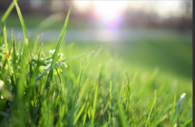The best grass species for Florida lawns are:
St. Augustine Grass: This is the most common and popular choice for Florida lawns. It thrives in heat, tolerates drought and salt, and forms a lush turf with broad, blue-green blades. St. Augustine grass performs well in both sun and shade, making it versatile for various Florida landscapes.
Zoysia Grass: Known for its drought tolerance and low maintenance requirements, Zoysia grass is well-suited for Florida's climate. It has a slow growth rate, which means less frequent mowing, and performs best in full sun but can tolerate some shade.
Bermuda Grass: This grass type is highly resistant to drought, humidity, and heat. It's an excellent choice for high-traffic areas due to its durability and fast-spreading nature. Bermuda grass is often used on golf courses and sports fields in Florida.
Bahiagrass: Particularly well-suited for large lots or areas with little irrigation, Bahiagrass thrives in hot, dry climates and sandy soils. It's low-maintenance and drought-resistant, making it a practical choice for many Florida homeowners.
Centipede Grass: This is a popular low-maintenance option for Florida lawns. It grows slowly, requiring less mowing, and can tolerate cooler temperatures and shade better than some other Florida grass types.
Seashore Paspalum: Ideal for coastal areas, this grass type is highly salt-tolerant and performs well in poor irrigation conditions. It's a fast-growing grass that's well-suited to central and southern Florida's climate.
When choosing the best grass for your Florida lawn, consider factors such as sunlight exposure, soil type, maintenance requirements, and intended use of the lawn area. Each grass type has its strengths and weaknesses, so selecting the right one depends on your specific needs and lawn conditions.

